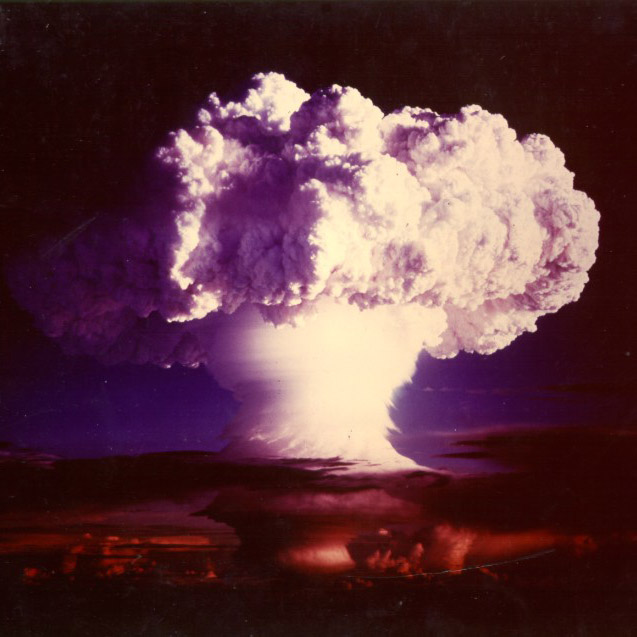Einsteinium
99
Es
Group
n/a
Period
7
Block
f
Protons
Electrons
Neutrons
99
99
153
General Properties
Atomic Number
99
Atomic Weight
[252]
Mass Number
252
Category
Actinides
Color
n/a
Radioactive
Yes
Named after Albert Einstein
Crystal Structure
n/a
History
Einsteinium was discovered as a component of the debris of the first hydrogen bomb explosion in 1952.
It was identified by Albert Ghiorso and co-workers at the University of California, Berkeley in collaboration with the Argonne and Los Alamos National Laboratories, in the fallout from the Ivy Mike nuclear test.
The new element was produced by the nuclear explosion in miniscule amounts by the addition of 15 neutrons to uranium-238.
It was identified by Albert Ghiorso and co-workers at the University of California, Berkeley in collaboration with the Argonne and Los Alamos National Laboratories, in the fallout from the Ivy Mike nuclear test.
The new element was produced by the nuclear explosion in miniscule amounts by the addition of 15 neutrons to uranium-238.
Electrons per shell
2, 8, 18, 32, 29, 8, 2
Electron Configuration
[Rn] 5f11 7s2
Einsteinium is the first divalent metal in the actinide series
Physical Properties
Phase
Solid
Density
8.84 g/cm3
Melting Point
1133.15 K | 860 °C | 1580 °F
Boiling Point
-
Heat of Fusion
n/a
Heat of Vaporization
n/a
Specific Heat Capacity
-
Abundance in Earth's crust
n/a
Abundance in Universe
n/a

Image Credits: Wikimedia Commons (National Nuclear Security Administration)
Einsteinium was first observed in the fallout from the Ivy Mike nuclear test
CAS Number
7429-92-7
PubChem CID Number
n/a
Atomic Properties
Atomic Radius
-
Covalent Radius
-
Electronegativity
1.3 (Pauling scale)
Ionization Potential
6.42 eV
Atomic Volume
28.5 cm3/mol
Thermal Conductivity
0.1 W/cm·K
Oxidation States
2, 3
Applications
Einsteinium is mainly used for scientific research purposes.
The rare isotope einsteinium-254 is favored for production of ultraheavy elements.
Einsteinium-254 was used as the calibration marker in the chemical analysis spectrometer of the Surveyor 5 lunar probe.
The rare isotope einsteinium-254 is favored for production of ultraheavy elements.
Einsteinium-254 was used as the calibration marker in the chemical analysis spectrometer of the Surveyor 5 lunar probe.
Einsteinium is harmful due to its radioactivity
Isotopes
Stable Isotopes
-Unstable Isotopes
240Es, 241Es, 242Es, 243Es, 244Es, 245Es, 246Es, 247Es, 248Es, 249Es, 250Es, 251Es, 252Es, 253Es, 254Es, 255Es, 256Es, 257Es, 258Es